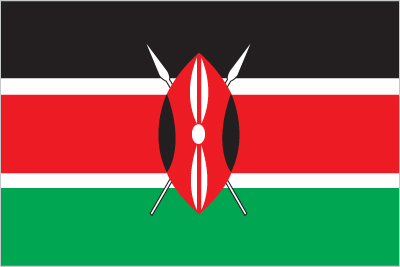Kazakhstan is committed to long-term sustainable development

Kazakhstan is committed to sustainable development through various initiatives in energy production, green finance, and innovative projects. Here’s a comprehensive overview of the country’s efforts and strategies:
Promoting Sustainable Development
Green Economy Kazakhstan aims to meet 50 percent of its energy needs from alternative and renewable sources by 2050. The country collaborates with the UNDP, EBRD, the EU, and others to establish new solar and wind power plants and high-tech greenhouses.
Green Finance The Astana International Financial Centre (AIFC) partners with the Ministry of Ecology, Geology, and Natural Resources, as well as international experts, to develop legislation for green financing. This initiative aims to support the financial aspects of sustainable projects.
Boosting Innovations
Green Projects The AIFC collaborates with the municipal administrations of Nur-Sultan and Almaty to develop a pool of green projects, benefiting from new green financial instruments.
Regional Hub for Green Finance Kazakhstan is working on developing a regulatory framework to become a regional hub for green finance. This initiative is crucial for the global transition to a green economy and aims to serve the entire region.
High-Level Dialogue on Climate Change
Green Central Asia On January 28, 2020, the European Union launched the Green Central Asia regional integration project in Berlin, which supports high-level dialogue on climate change in the context of the security and stability of the six states involved.
Renewables
Kazakhstan has garnered attention from international players in the renewable energy market and welcomes foreign investment in green energy projects. The country supports various renewable projects, including wind, solar, biogas, biofuel, and small hydro, through feed-in tariffs and a stable legislative framework. By 2020, it was estimated that $2 billion would be invested in renewables.
Wind Energy Approximately 10-15% of Kazakhstan’s land has average wind speeds of over 6 m/s, ideal for wind farms. Samruk-Energy is building a wind farm forecasted to produce 172 million kilowatt hours of electricity per year.
Solar Energy With 3,000 hours of sunlight annually, Kazakhstan has the potential to produce 2.5 billion kilowatt hours per year. The theme of EXPO hosted in Nur-Sultan was “Future Energy.”
Electricity – Power and Heat
The electricity generation and distribution industry is critical to Kazakhstan’s economy, supporting all industries and commerce. The country has 76 power stations, including five hydro-electric stations. Over 85% of electricity generation is privately owned, but the distribution network is state-controlled by KEGOC (Kazakhstan Energy Grid Operating Company). The total installed capacity of power plants in Kazakhstan is 20,591 MW, with significant production in Pavlodar and Karaganda regions. Major power generators include ECE, Ekibastuz-GRES-1 and GRES-2 (owned by Kazakhmys Corporation), and major heat producers include ENRC’s Aluminium of Kazakhstan, ArcelorMittal Temirtau, and Karaganda Zhylu.
Green Academy Scientific Education Centre
The Green Academy, the first of its kind in the post-Soviet era, provides informational support for Kazakhstan’s transition to a green economy. The academy enhances the educational capacity of government bodies, national companies, the business sector, and civil society in the field of the green economy. It also offers scientific and analytical support for the implementation of Kazakhstan’s green economy transition.
National Council on Sustainable Development
The Global Energy Environmental Strategy is a long-term program designed to ensure sustainable development through conflict-free energy supply without environmental damage. It calls for the acceptance of unified norms and standards in energy production and consumption and the establishment of a global financial mechanism to support sustainable energy supply.
Kazakhstan’s multifaceted approach to sustainable development, green finance, and renewable energy highlights its commitment to creating a greener, more sustainable future.
 Albania
Albania Algeria
Algeria Andorra
Andorra Argentina
Argentina Armenia
Armenia Australia
Australia Austria
Austria Azerbaijan
Azerbaijan Bahrain
Bahrain Belgium
Belgium Bolivia
Bolivia Brazil
Brazil Bulgaria
Bulgaria Cambodia
Cambodia Cameroon
Cameroon Canada
Canada Chad
Chad Chile
Chile China
China Colombia
Colombia Costa Rica
Costa Rica Croatia
Croatia Cyprus
Cyprus Czechia
Czechia Denmark
Denmark Ecuador
Ecuador Egypt
Egypt Finland
Finland France
France Georgia
Georgia Germany
Germany Ghana
Ghana Greece
Greece Hungary
Hungary Iceland
Iceland India
India Indonesia
Indonesia Ireland
Ireland Italy
Italy Jamaica
Jamaica Japan
Japan Jordan
Jordan Kazakhstan
Kazakhstan Kenya
Kenya Kuwait
Kuwait Latvia
Latvia Lebanon
Lebanon Libya
Libya Lithuania
Lithuania Luxembourg
Luxembourg Malaysia
Malaysia Maldives
Maldives Mali
Mali Malta
Malta Mexico
Mexico Moldova
Moldova Monaco
Monaco Morocco
Morocco Netherlands
Netherlands New Zealand
New Zealand Nigeria
Nigeria North Macedonia
North Macedonia Norway
Norway Oman
Oman

